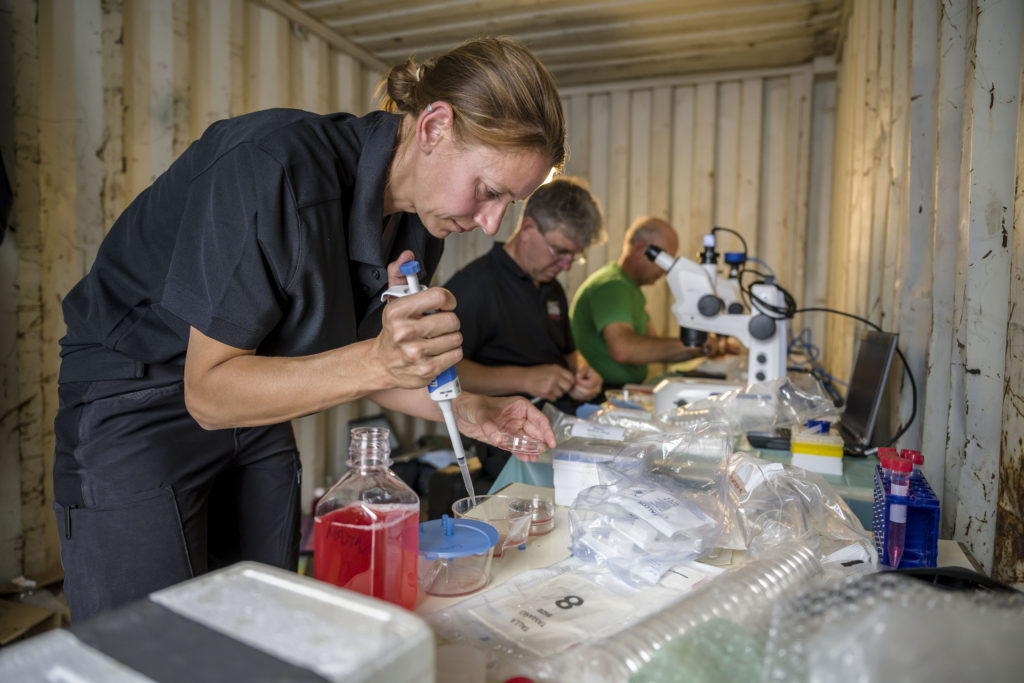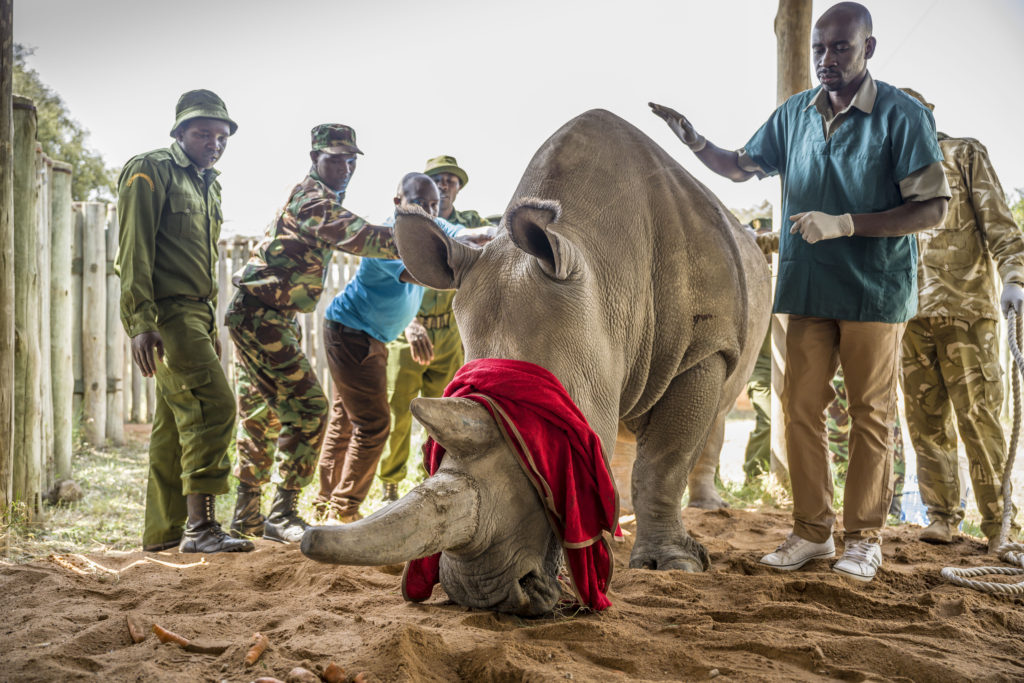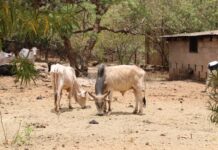|
Getting your Trinity Audio player ready...
|
By Clifford Akumu
Scientists are now inching closer to a promising first in Northern White Rhino conservation through assisted reproductive technology.
In an unprecedented procedure, a team of vets successfully managed to harvest eggs from two last surviving female species worldwide, with high hopes of producing embryo in vitro.
The procedure now paves way for a consortium of scientists to pull the endangered species from extinction.
With 10 eggs (oocytes) extracted from Najin, 30 and her daughter Fatu, 18, scientists are now making the last stab at reviving the conservation efforts of the endangered species.
The harvested eggs, added scientists, will be fertilized using frozen sperms from four deceased males. The last male that carried the species’ survival hopes, Sudan, died in March 2018 of old age at the Ol Pejeta Conservancy in Kenya. The two rare rhinos live under care and surveillance at the conservancy.
Egg collection procedure as a result of several years of research, development, and adjustments. The procedure was conducted with a probe, guided by ultrasound, which harvested immature egg cells (oocytes) from the ovaries of the animals when placed under anesthesia.
“It was a fantastic procedure. We were able to harvest 5 eggs from each animal, showing that both females can still provide eggs,” said Prof Thomas Hildebrandt from Leibniz Institute for Zoo and Wildlife Research who headed the procedure.
The harvested eggs were airlifted from Kenya to Italy, where the Avantea laboratory will fertilize the eggs in vitro with the sperm from the decreased males.
The embryos, which are expected to form after two weeks-will have to be frozen while scientists perfect the technique.
“The embryos will then be introduced to surrogate mothers-the southern white rhinos to carry the full pregnancy till birth,” said Jan Stejskal spokesman for Dvur Kralove Zoo.

Last year, a team removed eggs from female southern rhinos and fertilized them with frozen sperm from a male northern white rhino, to create hybrid embryos.
However, in the latest procedure, it still remains uncertain whether the implanted embryos will result in pregnancy.
“The operation means that producing a northern white rhino embryo in vitro-which has never been done before-is a tangible reality for the first time,” said Cesare Galli from Avantea-the laboratory of advanced technologies for biotechnology research and animal reproduction.
The approach may-if it is successful-yield several births of offspring within 3 years. But, noted the scientists, it has its limits.
First, the egg collection is a complicated procedure and can only be conducted three times a year with possible attempts very limited. And secondly, the genetic variability is very limited because the number of individuals from which sperm and egg cells can be utilized is down to just six.
However, for this reason, the Biorescue consortium of scientists and expert are pursuing a second approach; the creation of artificial gametes via stem cell transformation.
In this state-of-the-art approach currently under development, cells from skin tissue will be transformed into stem cells, which then can be developed into primordial germ cells and further into oocytes and sperm.
Efforts to save the species dates back to 2008 when they were considered extinct in the wild after a wide-ranging survey failed to find any specimen. One last wild sighting was made by Russian helicopter pilots who saw three rhinos thought to be northern whites in a remote part of Sudan in 2010.
But none has been seen since. And so through a partnership between Dvur Kralove Zoo, Ol Pejeta Conservancy, and Kenya Wildlife Service, in 2009, Najin and Fatu and two male northern white rhinos were translocated from the Czech Republic to Kenya with the hope that being closer to their natural environment would stimulate breeding.

Fatu is surrounded by her keepers and Dr. Stephen Ngulu of Ol-Pejeta. She has received the pre-medication and is guided gently onto a soft and bedding for the procedure. photo by Ami Vitale
In 2014, after a health assessment researchers realized owing to various genetic and health issues-the two females could not carry the pregnancy.
“One of the female rhinos developed endometrium in the uterus, while the other had hind leg and bodyweight issues- which could have led to death during pregnancy,” noted Stejskal.
But the only glimpse of hope, narrated Robert Hermes from Leibniz-IZW, was the functionality of the ovaries. He adds, “We needed ‘eyes inside the animals’; we used ultrasound to locate the follicles that enabled the vets to collect the eggs. The hormonal stimulation too helped the team to collect more ovum.”
Rhinos are the second-largest land mammal after elephants. And the white rhinoceros consists of two sub-species-the southern white rhino and the much rarer and critically endangered northern white rhino.
Scientists and researchers strongly believe the species woes are as a result of poaching and loss of habitat.
“We are also immensely proud to be part of the groundbreaking work which is now being deployed to rescue this species. Our hope now is for humans to finally start to understand that proper management of the environment in no longer a luxury but a necessity, “said Richard Vigne, Managing Director of Ol Pejeta.
The research is being conducted under the banner BioRescue, was formally launched in June with four million euros(Sh115 million) funding from Ministry of Education and Research, and hopes to take what it learns from working on the white rhino and apply it on other endangered species.














